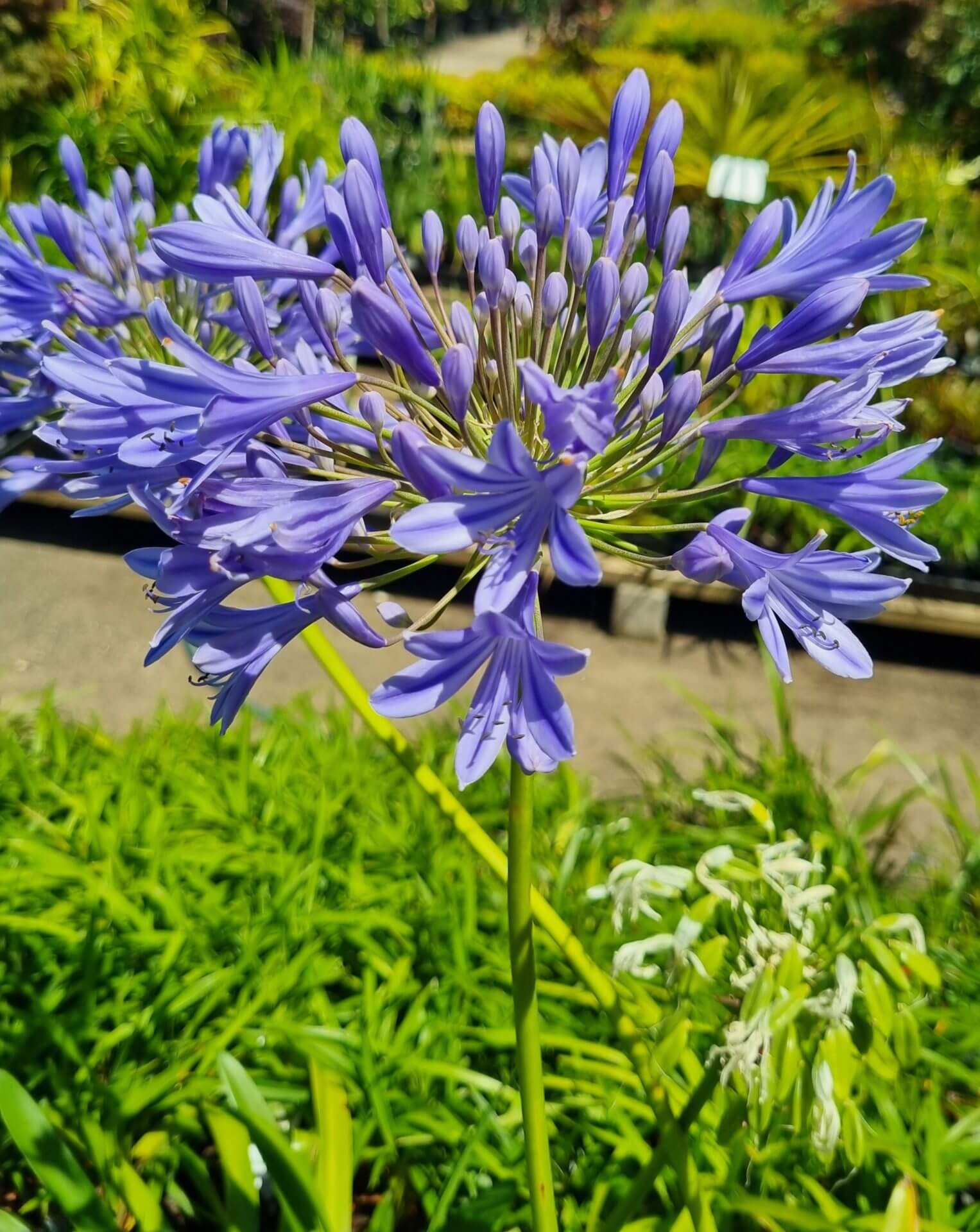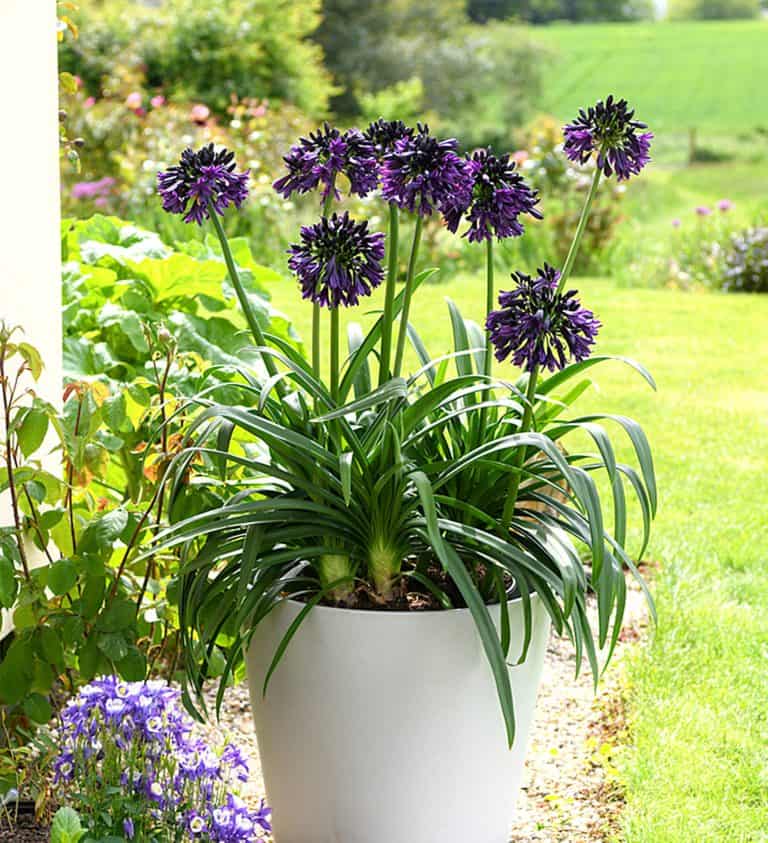Unleashing the Secret to Effective Agapanthus Farming: Advice for a Flourishing Yard
In the world of gardening, cultivating agapanthus efficiently needs a tactical approach that incorporates different facets of plant treatment. By comprehending the subtleties of agapanthus growing, one can create a setting where these plants flourish and bloom generously.
Planting Agapanthus: Ideal Practices
When planting Agapanthus, correct soil prep work is necessary for guaranteeing effective growth and growth of these stunning blossoms. Agapanthus, frequently referred to as Lily of the Nile or African lily, prospers in well-draining soil with a somewhat acidic to neutral pH level - Agapanthus. Before growing, it is important to modify heavy clay dirts with organic issue such as garden compost or peat moss to enhance water drainage and offer crucial nutrients for the plants
To plant Agapanthus, select an area that gets complete sunlight to partial shade, as this will certainly advertise healthy development and bountiful flowering. Dig a hole two times the diameter of the plant's root sphere and place the Agapanthus at the exact same deepness it was formerly growing. Delicately backfill the opening with soil, weighing down strongly to remove any type of air pockets around the origins.
Water the freshly planted Agapanthus completely and proceed to maintain the soil uniformly wet, specifically during the plant's active growing season. Agapanthus. Applying a balanced fertilizer once a month can additionally sustain the plant's growth and flowering. By adhering to these finest methods for growing Agapanthus, you can produce a magnificent display of these captivating flowers in your garden
Suitable Soil Conditions for Agapanthus
For ideal growth and growing success of Agapanthus plants, making certain the soil conditions are suitable is critical. Agapanthus likes dirt that is rich in nutrients, so incorporating a well balanced fertilizer throughout the growing season can advertise healthy and balanced development and lively blooms.

Watering and Feeding Tips
To ensure healthy growth and vivid blossoms, appropriate watering and feeding methods are necessary for successful Agapanthus farming. Agapanthus plants take advantage of normal watering, specifically during the expanding period. It is suggested to water deeply as soon as a week, ensuring the soil is damp however not waterlogged. During heat or in pots, even more constant watering might be needed to avoid the soil from drying completely.
When it involves feeding Agapanthus, a balanced fertilizer with equal components nitrogen, phosphorus, and potassium can be applied in the spring to advertise healthy development and flowering. Slow-release plant foods are suitable for supplying nutrients gradually over an extensive duration. Avoid over-fertilizing, as this can bring about extreme foliage development at the expenditure of blooms.
In addition, integrating raw material like garden compost into the dirt can enhance nutrient degrees and improve dirt structure, helping in the overall health and wellness of the Agapanthus plants. By following these watering and feeding suggestions, garden enthusiasts can ensure their Agapanthus plants flourish and generate sensational displays of blossoms.
Pruning and Deadheading Methods
Proper pruning and deadheading strategies play an important duty in maintaining the health and wellness and aesthetic appeals of Agapanthus plants, enhancing the vital practices of watering and feeding for successful growing. Trimming Agapanthus involves getting rid of spent flower heads, dead or yellowing fallen leaves, and total shaping of the plant to promote far better growth. Deadheading, the process of getting rid of discolored flowers, not only boosts the plant's appearance but likewise urges more blooming.
When deadheading Agapanthus, it is recommended to clip off the blossom stem at the base making use of sharp, tidy shears. This procedure reroutes the plant's energy from seed manufacturing back right into origin and vegetation development, advertising a much healthier and more durable plant. Routine deadheading can expand the growing duration of Agapanthus and prevent self-seeding, which can lead to overcrowding.
In terms of trimming, Agapanthus generally advantages from a light trim after flowering to clean up the plant and urge fresh development. Cutting down the spent click for more info blossom stems and removing any kind of broken or dead vegetation assists keep the plant's vigor and overall look. Nevertheless, it is vital to stay clear of cutting right into the crown of the plant, as this can weaken its health.

Protecting Agapanthus From Pests and Diseases
Executing efficient pest and illness management techniques is important to protecting the wellness and vitality of Agapanthus plants in growing. Agapanthus are typically hardy plants, yet they can still succumb to numerous insects and diseases if not properly looked after. One common parasite that impacts Agapanthus is the Agapanthus borer, a caterpillar that tunnels right into the plant, causing damages to the leaves and blossoms. To avoid infestations, routine inspection of the plants is crucial. If borers are found, they can be manually gotten rid of, or insecticidal soap can be used as a control action.
In addition to bugs, Agapanthus are prone to illness such as origin rot and fungal leaf spots. By staying vigilant and addressing pest and condition issues quickly, gardeners can aid their Agapanthus grow and prosper.

Conclusion
To this post conclude, successful cultivation of agapanthus calls for correct planting strategies, excellent soil conditions, appropriate watering and fertilizing, regular trimming and deadheading, and protection from diseases and pests. By adhering to these pointers and tricks, gardeners can make sure a prospering yard full of stunning agapanthus blossoms. Agapanthus. Bear in mind to maintain consistent care and interest to information to advertise the health and durability of these sensational plants
When growing Agapanthus, correct dirt preparation is important for making sure effective development more tips here and growth of these attractive blossoms.Water the newly grown Agapanthus thoroughly and continue to keep the soil evenly moist, especially throughout the plant's active growing period.For optimum development and growing success of Agapanthus plants, making certain the dirt problems are ideal is important. When growing or hair transplanting Agapanthus, guarantee the soil is well-prepared to offer the required foundation for the plants to establish themselves efficiently. One common insect that affects Agapanthus is the Agapanthus borer, a caterpillar that passages right into the plant, triggering damage to the leaves and flowers.